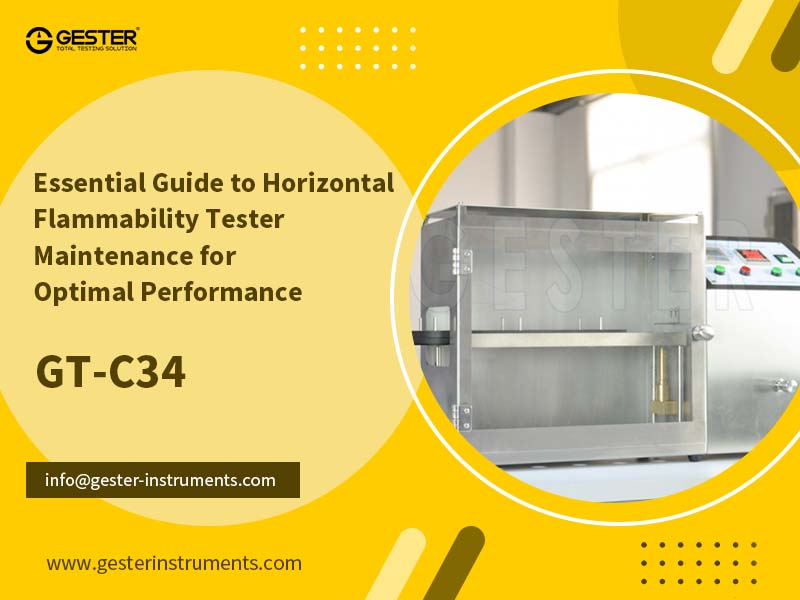Essential Guide to Horizontal Flammability Tester Maintenance for Optimal Performance

Why Maintenance Matters for Horizontal Flammability Testers
A well-maintained Horizontal Flammability Tester is crucial for:
Accuracy: Consistent test results depend on precise calibration and proper functionality.
Safety: A poorly maintained ISO 3795 Horizontal Flammability Tester could result in faulty readings, compromising safety standards in vehicles and equipment.
Cost Efficiency: Regular maintenance prevents costly repairs and extends the machine’s lifespan.
Daily Maintenance Checklist
Perform these routine checks to ensure optimal performance:
1. Visual Inspection:
Inspect the stainless steel test cabinet for any signs of corrosion or damage.
Ensure the glass observation pane is clean and free from scratches to maintain clear visibility during tests.
2. Time Recorders Calibration:
Verify the accuracy of the two time recorders. The firing time and burning time must be recorded with an accuracy of 0.01 seconds.
Check that the time recorders are synchronized and functioning properly.
3. Electric Spark Firing Mechanism:
Test the automatic electric spark firing mechanism before each session. Ensure it ignites consistently without delay or misfire.
Weekly Maintenance Routine
1. Cleaning the Test Chamber:
Remove any residue or debris from previous tests to avoid contamination and ensure consistent burning conditions.
Use a non-abrasive cleaner to maintain the stainless steel surface and prevent corrosion.
2. Lubrication:
Lubricate moving parts such as the firing mechanism and timing devices to ensure smooth operation.
3. Electrical System Check:
Inspect wiring and connections for any wear or loose connections. This prevents electrical failures during testing.
Monthly Preventative Maintenance
1. Calibration Check:
Use a certified calibration tool to verify the accuracy of the time recorders. Calibration ensures that the readings meet the required standards.
Record calibration data in a log for reference and auditing purposes.
2. System Diagnostics:
Run a full system diagnostic to identify potential issues that could affect performance. Address any anomalies immediately.
3. Replace Worn Components:
Replace worn or damaged components such as the electric spark igniter and timing sensors to prevent malfunctions.
Troubleshooting Common Issues
1. Inconsistent Ignition:
Check the electric spark firing mechanism for dirt or wear. Cleaning or replacing the igniter usually resolves this issue.
2. Timing Discrepancies:
Ensure that both time recorders are properly calibrated. If the problem persists, recalibrate or replace the timing sensors.
3. Error Messages on Display:
Refer to the user manual for specific error codes. Typically, these can be resolved by restarting the system or conducting a software update.
Storage and Handling Tips
Proper storage and handling prevent unnecessary wear and damage:
Keep the Horizontal Flammability Test Chamber in a temperature-controlled, dry environment to prevent moisture damage and corrosion. When moving the tester, ensure it is properly secured to avoid damage to internal components.
When to Seek Professional Service
Despite routine maintenance, some situations may require professional servicing.
Copyright © 2025 GESTER International Co.,Limited | All Rights Reserved
Hello, please leave your name and email here before chat online so that we won't miss your message and contact you smoothly.